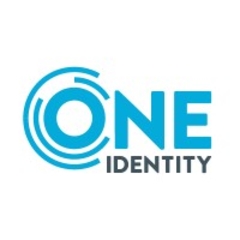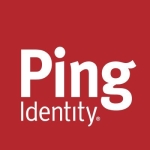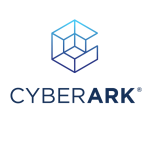What is our primary use case?
One of the key use cases is certifications for SOX applications. Another is centralized onboarding and offboarding. Another use case is the Self Service using the IT Shop, which gives us a repository of entitlements that people can request and then have the approval workflows, and document the approvals for SOX and other regulatory requirements.
The appliances we use for this solution are VMs. We went with that version because we're forced to. We're not allowed to use physical hardware. Our infrastructure group requires us to use VMs.
How has it helped my organization?
The process prior to One Identity was very manual for certification for SOX applications, using Excel spreadsheets etc. We were able to automate that process. Right now we're doing approximately 250,000 automated attestations every quarter. The time it takes to do those is greatly reduced. For example, with our financial system, reviews used to take two-and-a-half months to complete and now we have 90 percent compliance within two days.
When it comes to onboarding and offboarding, prior to our launching of One Identity Manager, users were provisioned disparately across the globe in all of our offices. There was no consistency or structure. We have centralized that and it's based on the HR data for new hires. And more importantly for "leavers" — and that was always an audit point, for not catching the leavers — we have a feed from Oracle as well that promptly disables access on the user's last day of work. That is a key use case.
In terms of integrations, we have a custom connector with our ERP system, JD Edwards. The process to build the connector was lengthy. It took us about six months. It was not easy. But with it in place, we improved the time for doing the recertifications. Once they saw the efficiency of the attestations for that, everyone was wanting to get on board with other apps as well.
What is most valuable?
The most valuable features include the
- automated attestations or recertification
- IT Shop, which reduced calls to the help desk by 60 percent from users not having to contact someone to request access to something. Now, they go to the Self Service portal.
Those two are the biggest wins.
In addition, when it comes to usability and functionality, users are always the most difficult to please. But when we went to version 8, we actually had zero negative feedback. We had people who were praising the UI of the new version. It was very well received. We had no pushback or anything negative that we had to address.
Another huge win is that a lot of our producers and salespeople are constantly on the road, and making them log into a portal for approval was very difficult. Once we implemented the approval feature, those users were extremely happy with it. It saves time and helps the end-users to become productive sooner because they can do the approvals.
What needs improvement?
There is room for improvement to their password self-service tool. We're actually leaving that tool right now because it's just been horrible. We've discussed that with them, but for such an easy functional feature it is lacking.
Number two is their upgrades. We're going to 8.12 right now and everything is running very smoothly but this is actually the first upgrade that has gone off well. Even the other "dots" have taken us six months or longer to get through QA testing. Those are the two key areas for improvement.
For how long have I used the solution?
We've been using One Identity Manager since 2013.
What do I think about the stability of the solution?
Once we went to version 8 it became very stable. Version 6 had a lot of issues with performance. But all of those were resolved with the new infrastructure and table structures. We are never down. We are 99.999 up.
What do I think about the scalability of the solution?
One of the reasons we bought One Identity was for scalability because we grow through acquisitions. We have about 40,000 internal users currently, but two years ago we only had 20,000. We knew that we would grow and would have to have something that would grow with us.
How are customer service and technical support?
We have really good support. We tend to deal with one support person in particular, so he knows our environment well. We have a great relationship with their support in general.
Which solution did I use previously and why did I switch?
Avatier was our previous solution. It couldn't scale with us. It was for a company with one domain, but we have about 12 domains and one forest. Even though it sat on a .NET framework, we could not do our own development so we were constantly going back to the vendor for enhancements.
How was the initial setup?
The initial setup was straightforward. It's really easy to install. The out-of-the-box functions really are out-of-the-box. You're not having to do a lot of custom development.
This is our second-generation tool, our first generation being Avatier. With our use cases already defined in that — and that's probably the longest thing that it will take to get done to get across the finish line — we had One Identity up and running within less than three months.
Because we have multiple divisions around the world, we broke up our implementation by region and then by division within those regions. We would launch a division and then leave a week between and then launch the next one so that we always had time in between. That's one of the things that I tell people: Do not do a big-bang launch because it will not be successful. You have to do a rolling launch, in my opinion.
When it came to training, we broke it up into the various populations. We did end-users, we did managers, and we did requesters. We developed that training internally. We did on-demand training modules as well as live training. From an engineering perspective, I did send engineers to One Identity. However, out-of-the-box, it was pretty straightforward. Based on the knowledge transfer from Professional Services, they were able to adequately manage the tool.
What about the implementation team?
For our initial implementation, we used One Identity's Professional Services. Our experience with them was good. They knew the system and they were able to deploy our use cases.
Our migration project with iC Consult happened about two years ago. We were on version 6 and we had just started to undertake a move to version 7 but 8 had come out. We decided to go ahead and jump from 6 to 8. The reason we decided to do so was that that migration took nine months and, while version 7 did not have a UI change, 8 was going to have a UI change and we could not put our users through two upgrades. We had to think about our end-users and jumped straight to 8.
But iC Consult is phenomenal. I recommend them a lot. Many of their consultants and engineers came from the original Volcker Informatiks, which created the tool that we see today. Their employees have fundamental, foundational knowledge of the tool inside and out. They had the scripts, they knew the tables that needed to be restructured, inside and out. It was just an amazing, smooth process. I have colleagues who have fired up to three partners, in trying to get themselves migrated off of 6 to 7, because they were not successful. They are still on 6 and are trying to get funding — because they've thrown away so much money — so they can get iC Consult to come in because iC Consult just knows its stuff around the tool so well.
Our experience with iC Consult was outstanding. They were very involved. During our go-live weekend, Ulli, who is CEO of the Americas now, was pulled onto another project. They felt confident we would get through it without him, but at their own cost they sent another engineer to the US to be here during the migration. They were always very thoughtful around making sure that it would be successful and that we felt confident that the right resources were available.
Because of their knowledge, the iC Consult consultants were able to hit the ground running. So many consulting companies will come in and it takes them a while to get the lay of the land. They've got junior people on the account. We did not have that experience, thank goodness. I had come from a consulting company that was renowned for just not putting the best resources on projects and thus it stumbled and failed. The iC Consult consultants' maturity levels and their knowledge around the tools allowed them to hit the ground running with no issues.
We were completely satisfied. We have used them continuously since then. I have a very lean team — I only have three engineers to handle the global program. So iC Consult will do special projects that we just don't have the time to focus on. They can go off, uninterrupted, and handle those for us.
What was our ROI?
We have seen return on our investment with this solution, especially, as I mentioned, regarding the attestation recertification. The time that people have to focus on their real jobs and not spend it doing recertifications is huge.
Which other solutions did I evaluate?
We had gone into PoC, originally, with Avatier, CA, and Quest. But Volcker had been purchased by Quest soon after. We liked Quest, we liked our salesperson and when the tool began to grow and when we re-org'd and I was allowed to choose a different tool, we decided to do a PoC.
From a cost perspective, One Identity has the biggest bang for the buck. We do not have a large team and I cannot spend a lot on services. I wouldn't even look at the likes of IBM and Oracle because I know how expensive they would be.
What other advice do I have?
It isn't just this product. IAM projects never come in on time or on budget. It's just the nature of the beast. But definitely have your use cases thoroughly defined. If you have those, the configuration will come rather easily.
Even though customization is available, you need to be aware of the dependencies and the other features that may be negatively impacted if you don't do best practices. You want to make sure that you're using best practices and not just configuring something because that's the way it's done in your company. That could negatively impact the other features that do adhere to best practices.
Which deployment model are you using for this solution?
On-premises
Disclosure: PeerSpot contacted the reviewer to collect the review and to validate authenticity. The reviewer was referred by the vendor, but the review is not subject to editing or approval by the vendor.


















